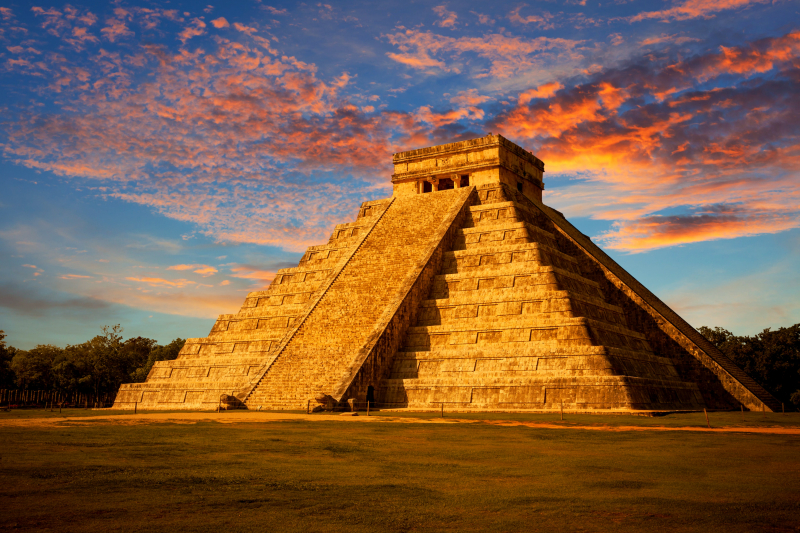Chichén Itzá

Chichén Itzá was a large pre-Columbian city built by the Maya people in Yucatán State, Mexico. This historic site was a major focal point in the Northern Maya Lowlands from the Late Classic (c. AD 600–900) through the Terminal Classic (c. AD 800–900) and into the early portion of the Postclassic period (c. AD 900–1200). Chichen Itza was one of the largest Maya cities and it was likely to have been one of the mythical great cities, or Tollans, referred to in later Mesoamerican literature. The city may have had the most diverse population in the Maya world.
Chichén Itzá exhibits a multitude of architectural styles, reminiscent of styles seen in central Mexico and of the Puuc and Chenes styles of the Northern Maya lowlands. The presence of central Mexican styles was once thought to have been representative of direct migration or even conquest from central Mexico, but most contemporary interpretations view the presence of these non-Maya styles more as the result of cultural diffusion. The ruins in the city feature religious temples of the Maya Civilization that also includes the Temple of Kukulkán which has 365 steps, one for each day in the Haab solar calendar.
The ruins of Chichen Itza are federal property, and the site's stewardship is maintained by Mexico's Instituto Nacional de Antropología e Historia (National Institute of Anthropology and History). The land under the monuments had been privately owned until 29 March 2010, when it was purchased by the state of Yucatán. Nowadays, even though Chichen Itza is one of the most famous tourist attractions in Mexico, The National Institute of Anthropology and History has closed a number of monuments to public access. While visitors can walk around them, they can no longer climb them or go inside their chambers.
Situated in: Mexico
Built in: 5th-13th century
Built by: Maya-Toltec civilization
Designated by UNESCO: 1988







